Comics had many Muslim Heroes in the 1940s—including two (or three?) Superheroes
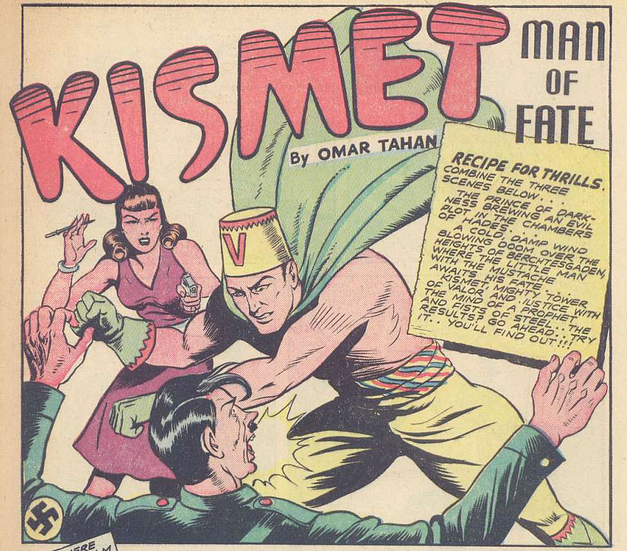
The first Muslim superhero appeared in 1944, over three decades before the first unambiguously Jewish superhero. In the first half of the twentieth century, the US loved Muslim and Middle Eastern characters. Rudolph Valentino became one of the first Hollywood heartthrobs in 1921 after starring in The Sheik. One of Douglas Fairbanks’ biggest hits was The Thief of Bagdad in 1924. Aladdin, Sinbad, and original Arabian heroes appeared in books, movies, and newspaper strips. It was only natural for the comic book industry to exploit the popularity of Muslim characters.
In 1942, the oddly named Raja the Arabian Knight was a contender for the title of the first Muslim comic book superhero. He appeared in five issues of Big Shot Comics and made the cover on one:
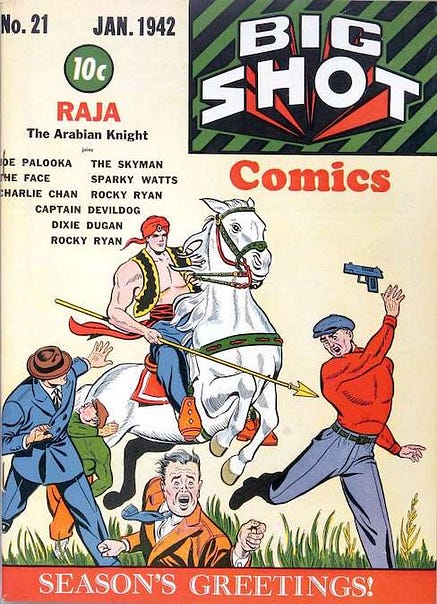
Why he’s called Raja, an Indian word for king, we’re never told. Nor do we learn his real name or why he likes running around without a shirt. At the start of his first story, he seems to be accepting the job of protecting America from Marvelo, a magician whose last appearance was in the previous issue.
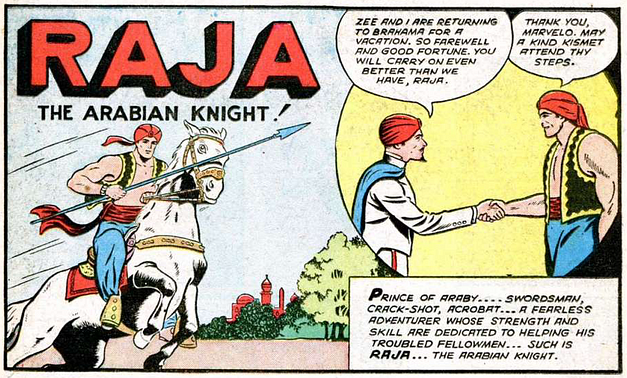
Raja’s never explicitly identified as Muslim, but everyone would assume an Arabian prince was Muslim.
There’s no doubt about the religious tradition of Kismet, Man of Fate. In his appearances in 1944 in Bomber Comics, he hopes Allah will aid him and mentions Islam:
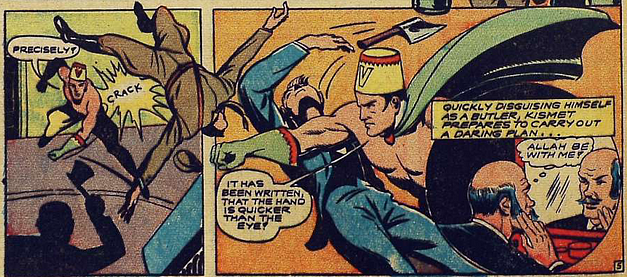
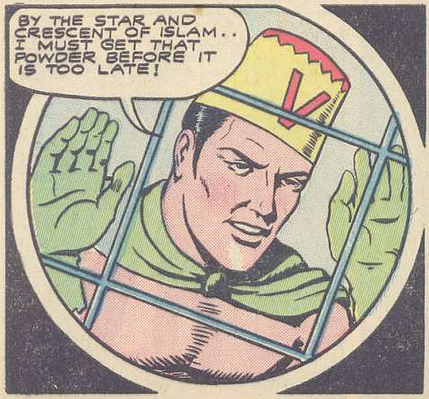
Like Raja, Kismet’s past is a mystery in the four stories that were published. He seems to be an ordinary man, but we’re never told his real name or how he became Kismet. His stories are credited to Omar Tahan, a house name that was used by Ruth Roche.
The superhero genre began to die in the 1940s, so it’s not surprising that the Arabian Knight and Kismet were the only Muslim superheroes during comic books’ Golden Age. What is surprising is that Jewish superheroes began appearing in the late 1970s, but there were no more Muslim superheroes until DC made Simon Baz a Green Lantern in 2012 and DC made Kamala Khan the new Ms. Marvel in 2013.
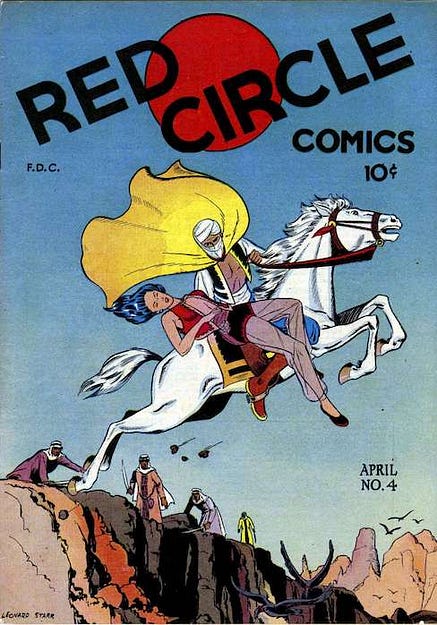
Afterthought: I was torn about whether to call a third Muslim comic book character a superhero. I’ve decided to add him to this article and let the reader decide. In 1945, El Kuraan made two appearances in Red Circle Comics, in a story in #3 and on the cover of #4. When oil is discovered on his people’s land and they are driven from it, the chief’s son Jahn becomes El Kuraan, the Desert Hawk.
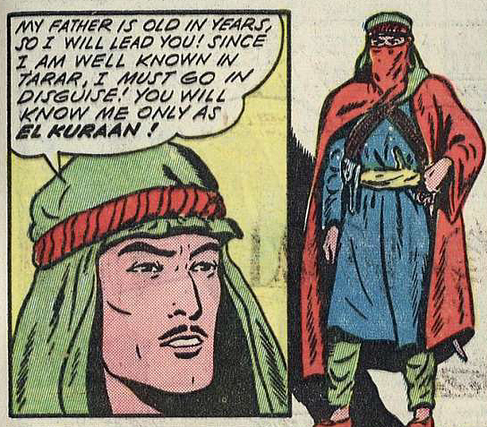
Whether El Kuraan is an invented word, I don’t know — it’s not the Arabic word for hawk. But the Desert Eagle is clearly a classic comic book hero and deserves his footnote in the history of comic books and race.
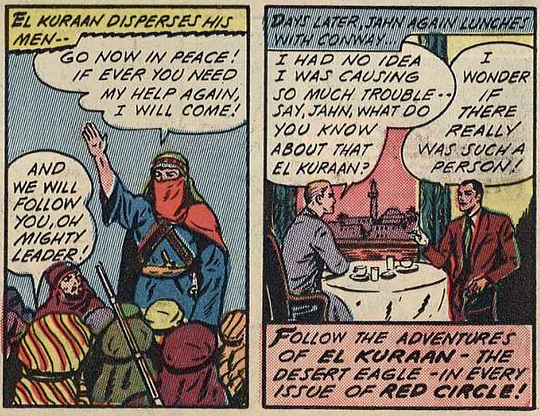
Afterthought #2: The number of Middle-Eastern characters in early comics shouldn’t surprise you. Middle-Easterners have been legally white in the US since 1909. As noted at Dept. of Justice Affirms in 1909 Whether Syrians, Turks, and Arabs are of White or Yellow Race:
It started when [George] Shishim, acting in his capacity as a policeman in Venice, California, Los Angeles County, arrested the son of a prominent lawyer for disturbing the peace. … The arrested man claimed Shishim had no right to arrest him because Shishim was not and could not become an American citizen, because he was not of the “white” race. Having been born in Lebanon, part of Asia, Shishim was considered of Chinese-Mongolian ancestry.
Shishim’s lawyers wrote
…to many universities asking them for the ethnological background of Lebanese-Syrian and Arab ancestry. The answer was: “from the white race.” This document and others were presented in court, and Judge Hutton of the Superior Court of Los Angeles ruled that Shishim was eligible for citizenship and that the Lebanese and Syrians belong to the “white race.”
Comments
Post a Comment